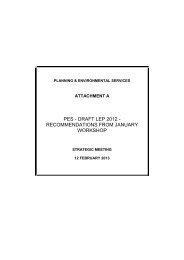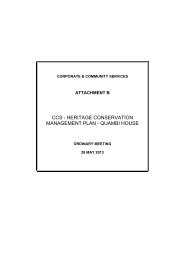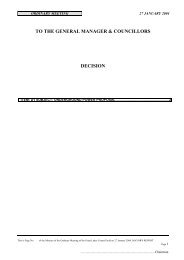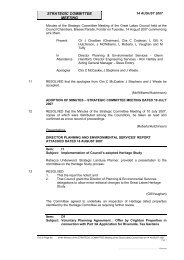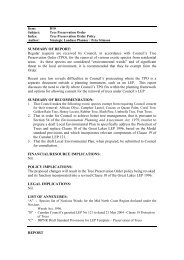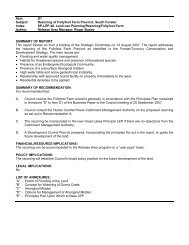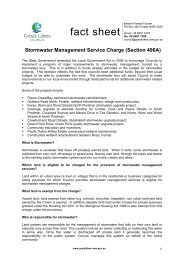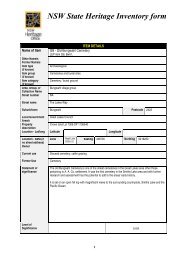13.2 The Wallis Lake Estuary Management Committee - Great Lakes ...
13.2 The Wallis Lake Estuary Management Committee - Great Lakes ...
13.2 The Wallis Lake Estuary Management Committee - Great Lakes ...
Create successful ePaper yourself
Turn your PDF publications into a flip-book with our unique Google optimized e-Paper software.
<strong>Wallis</strong> <strong>Lake</strong> <strong>Estuary</strong> <strong>Management</strong> Plan<br />
13.7 Best practice guidelines for human - dolphin interactions<br />
13.7.1 In water guidelines<br />
• maintain a small number of people to dolphins in the water<br />
• do not enter the water abruptly when dolphins nearby<br />
• keep activity minimal, especially if dolphin nearby<br />
• no loud noises or sudden movements<br />
• no touching dolphins – if touch is inevitable avoid touching blowhole, eyes/face, genital region, flippers, dorsal<br />
fin, flukes, and don not wrap arms around or restrict dolphin movement in any way<br />
• never chase dolphins<br />
• leave the water immediately if dolphin exhibits sexual or agonistic behaviour directed at humans<br />
• do not present inorganic objects or rope to dolphins, and absolutely no feeding<br />
• no flash from camera, sunscreen, repellent or jewellery<br />
13.7.2 Vessel operator guidelines (eg motor boats, yachts, kayaks, canoes, surfskis,<br />
inflatable craft)<br />
• do not travel faster than dolphins when within caution zone of 150m<br />
• do not approach closer than 50m to any dolphin<br />
• no sudden increase or decrease in speed<br />
• no cast fishing lines or setting nets nearby<br />
• do not operate twin engines in opposite directions<br />
• watch for dolphins before engaging in gear<br />
• do not cut off dolphins (ie no leap frogging to get ahead of animals) parallel or behind follows are recommended<br />
• do not permit more than one boat near a group of dolphins in order to minimise underwater acoustic<br />
disturbance<br />
• special care should be taken if a calf is observed with the group, as a dolphin calf cannot dive well to avoid<br />
collision with a boat<br />
13.7.3 Craft prohibited for dolphin interactions<br />
• personal motorised craft (jetskis and similar craft), hovercrafts and parasails are prohibited for all cetacean –<br />
human interactions<br />
• if using a prohibited craft and a person finds him/herself in the vicinity of a dolphin, he/she should slow down<br />
and avoid the dolphin, giving 300m distance between the vessel and the cetacean<br />
• a person on a surfboard should not approach a cetacean within 30m for safety reasons<br />
(Frohoff T. and Frohoff J., 1995; ANZECC, 2000)<br />
136





